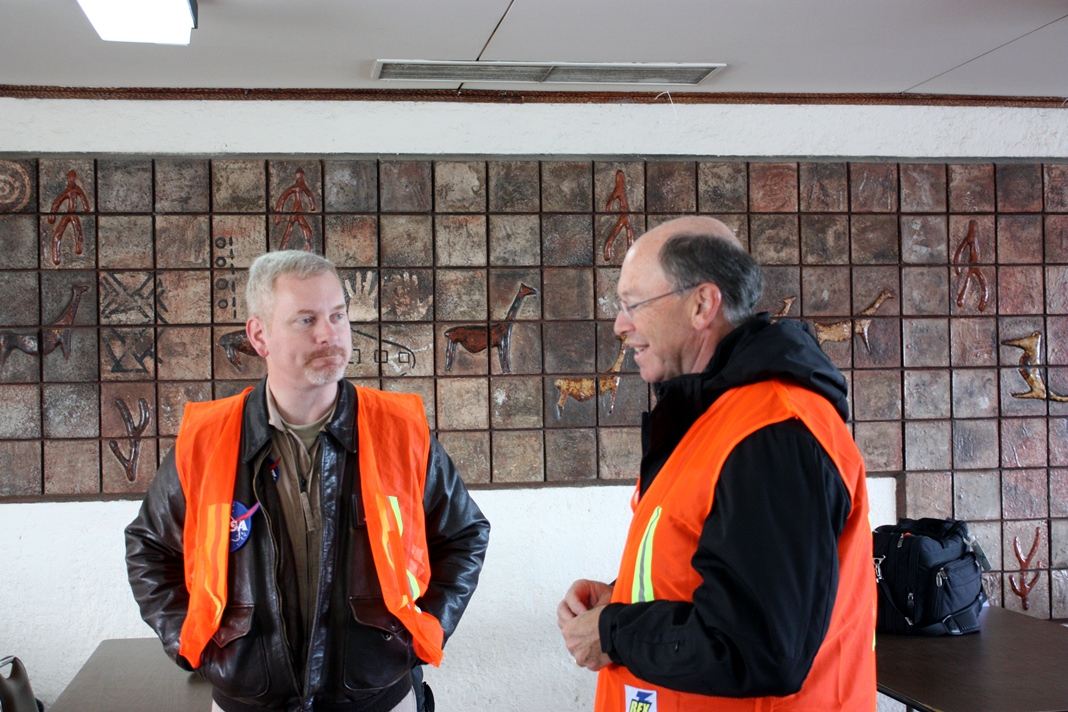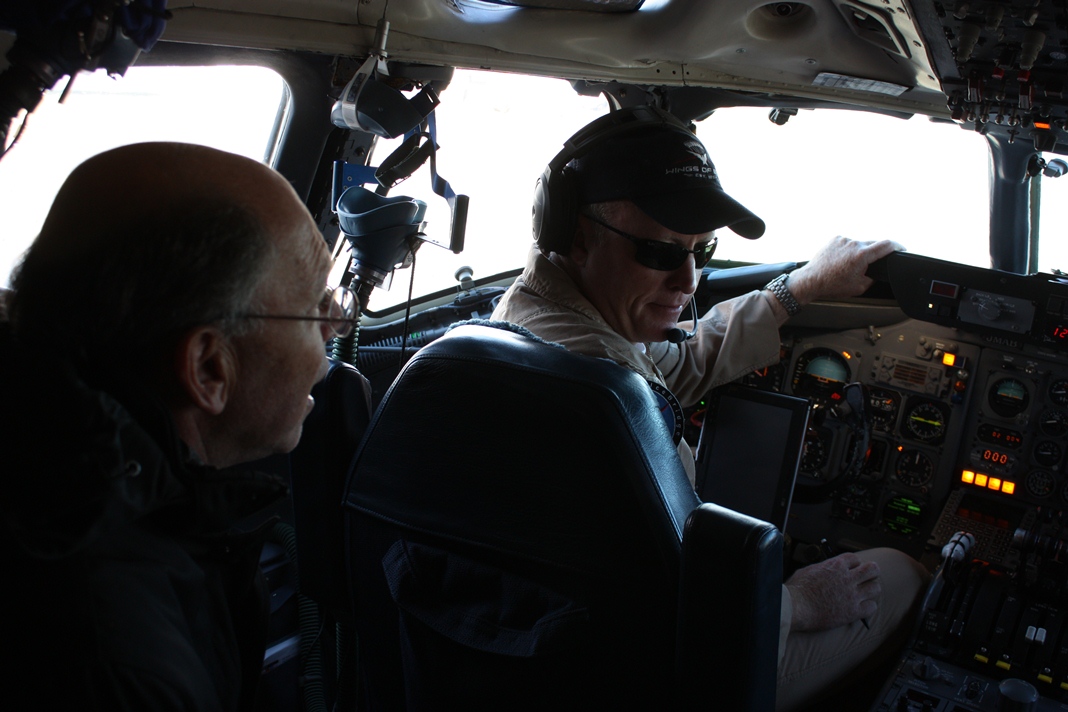By George Hale, IceBridge Science Outreach Coordinator, NASA Goddard Space Flight Center
With its proximity to the Antarctic Peninsula, Punta Arenas, Chile, a city on the Strait of Magellan in southern South America, is a popular destination for scientists on their way to Antarctica. Not onlydoes NASA’s Operation IceBridge use the Punta Arenas airport as a home baseduring its Antarctic campaign in October and November, the city is also a base of operations for a variety of Antarctic science missions. During this year’s Antarctic campaign, the IceBridge team got to take a close up look at the United States Antarctic Program’sicebreaker Nathaniel B. Palmer, which calls Punta Arenas home.
On Oct. 24, Jamee Johnson and Chris Linden of the United StatesAntarctic Program led a group of IceBridge personnel on a guided tour of thePalmer. The research vessel is waiting in the port of Punta Arenas until lateDecember or early January, when it will carry scientists and their equipment toMcMurdo Station in Antarctica, conducting experiments along the way. Once there, passengers willoffload and a new group of people and gear will board the icebreaker for a returntrip to Punta Arenas.

IceBridge personnel on the dock in Punta Arenas in front of the Nathaniel B. Palmer. Credit: NASA / Christy Hanse nand USAP / Jamee Johnson
The Palmer is a 6,500 ton icebreaking research vessel thattravels to and from bases in Antarctica like United States’ McMurdo Station.The vessel sails from one of its home ports, like Punta Arenas, carrying scientists who do research along the way. During thetour, IceBridge personnel got to see some of the ship’s five labs, the galley,the infirmary and the ship’s bridge, where they met Sebastian Paoni, captain of the Palmer since2007.

Palmer Captain Sebastian Paoni (right) meets visitors on the bridge. Credit: NASA / George Hale
In many ways, thePalmer is similar to other large, ocean-going research ships. There are placesfor crew and passengers to sleep, eat, relax, exercise and socialize. Withtrips to sea lasting several weeks at a time, ships like the Palmer need to beself-contained floating cities, carrying enough food, water, spare parts andother supplies needed to keep the crew and passengers safe and happy.
The big difference between the Palmer and other research vessels is that it has a reinforced hull designed to let it break through ice, opening a passage to travel through. There are limits to how thick of ice the ship can break through, so planning the ship’s route often requires satellite imagery and other data that can show where thinner ice is. Sailing through ice is a slow and often noisy process, but when your path is blocked by sea ice, slow and noisy beats not atall.
Science By Air and Sea
The Palmer and IceBridge’s aircraft both gather geophysical data, and despite the different nature of these platforms the instruments have some similarities. In the labs, Linden, a senior systems analystaboard the Palmer, showed IceBridge team members several different instruments, such as including a gravimeter and a sonar system used to map the ocean floor. Thesonar uses a technique to create swaths of data that resemble theswaths of elevation data produced by IceBridge’s Airborne Topographic Mapperinstrument.
Probably the biggest similarities are dealing with motion and the changing array of instruments used. Scientists need to counteract motion from either a rolling ship or vibrating airplane, which is handled in both cases by referencing the instruments with data from GPS and inertial guidance systems. Also, much like on NASA’s aircraft, the instruments on the Palmer change depending on what is being studied. Changing the configuration of the ship’s equipment is something Johnson said is one of the most interesting parts of the job.
In return for graciously taking visitors on a tour of the ship, IceBridge invited some Palmer personnel to come along on a survey flight. People working on icebreakers rely on information about sea ice to plan their routes and although IceBridge data isn’t directly used, flying along will give them a chance to see how the mission measures ice from the air.

Palmer visitors stand on the helipad on the Palmer’s stern. Credit: NASA / Christy Hansen and USAP / Jamee Johnson
For more information about the Nathaniel B. Palmer, visit: http://www.usap.gov/usapgov/vesselScienceAndOperations/index.cfm?m=4









